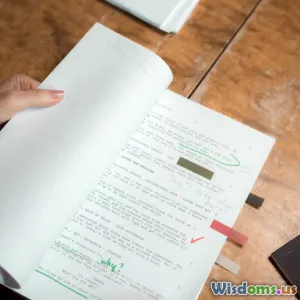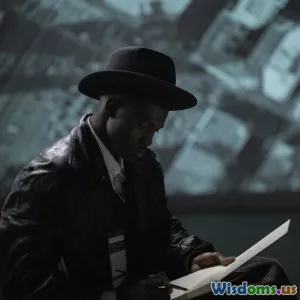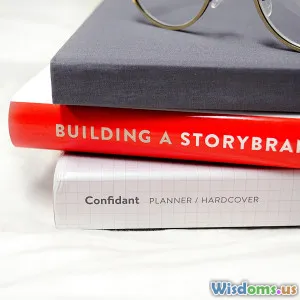
Mastering Short Story Endings Techniques That Pack an Emotional Punch
7 min read Unlock powerful techniques to craft short story endings that resonate deeply with readers and leave lasting emotional impact. (0 Reviews)
Mastering Short Story Endings: Techniques That Pack an Emotional Punch
Endings matter. In a short story, the conclusion is more than just a wrapping up of events — it’s the emotional knockout punch that leaves readers reflecting long after the last word. But crafting a memorable, emotionally charged conclusion is an art form that requires deliberate technique.
Whether you’re an emerging writer trying to elevate your stories or a seasoned author looking to deepen your impact, understanding how to sharpen your endings will transform your creative work. This article explores powerful techniques and insightful strategies to craft short story endings that pack an emotional punch.
Why Endings Are Crucial in Short Stories
Short stories have limited space to build meaning and engage readers. Unlike novels, short stories must use concise arcs to develop character, atmosphere, and theme efficiently. A well-crafted ending unifies all these elements and delivers an emotional payoff that justifies the narrative journey.
Nobel laureate Alice Munro says, “A good ending makes you look back at the story like a man leaving a theater — with an afterthought, a sense of continuing now outside the story.”
Think of famous short story endings like O.Henry’s twist in The Gift of the Magi or Shirley Jackson’s eerie finale in The Lottery. Each carefully builds up context and then delivers a resolution or revelation that stays with readers — sometimes surprising, often haunting.
Key Techniques to Craft Emotionally Powerful Endings
1. Leverage Unexpected Twists with Emotional Truth
Twists are effective when they feel earned rather than arbitrary. To resonate deeply:
- Plant subtle clues early in the story that pay off at the ending.
- Ensure the twist reveals something new about the characters’ true nature or circumstances.
- Combine surprise with emotional stakes, not just shock value.
Example: In Edgar Allan Poe’s The Tell-Tale Heart, the horrific confession at the end shocks readers but also reveals the narrator’s psychological unraveling, stressing his guilt and madness.
2. Use Ambiguity to Encourage Reflection
Leaving some questions unanswered invites readers to engage emotionally by projecting their own interpretations or fears:
- Avoid complete closure if it suits your story’s tone and themes.
- Create endings that suggest possibilities rather than certainties.
Example: Ambrose Bierce’s An Occurrence at Owl Creek Bridge ends with ambiguity about what is real or imagined, provoking readers to question the nature of reality and death.
3. Employ Symbolism and Imagery in Final Moments
Visual or symbolic elements encapsulate greater thematic meaning in a subtle but emotionally resonant way:
- Incorporate recurring motifs that culminate at the ending.
- Use imagery that contrasts or harmonizes with the story’s arc.
Example: Ernest Hemingway’s Hills Like White Elephants closes by emphasizing the imagery of the landscape, reflecting the tension and emotional complexity unresolved between the characters.
4. Evoke Empathy by Focusing on Character Emotions
A strong emotional connection often comes from grounding the ending in characters’ inner experiences:
- Show nuanced emotional responses rather than narrating them.
- Allow a moment of vulnerability, realization, or acceptance.
Example: In Katherine Mansfield’s The Garden Party, the protagonist’s change in perspective about class and loss culminates emotionally, inviting readers to feel her internal growth.
5. Full Circle Endings for Satisfying Closure
Returning to an early image, phrase, or situation can give readers a feeling of completeness:
- Reinforce main themes or emotional questions.
- Create a subtle echo that feels like a meaningful bookend.
Example: In Ray Bradbury’s A Sound of Thunder, the story ends by revisiting the butterfly effect introduced upfront, highlighting consequences and fragility of life.
Practical Tips to Implement These Techniques
- Outline Your Ending Early: Knowing your emotional destination helps build towards that moment organically.
- Read and Analyze Masters: Study how acclaimed short story authors conclude their tales and what emotions their endings stir.
- Revise with Emotion in Mind: In rewrites, focus less on plot mechanics and more on emotional resonance and delivery.
- Test Your Ending: Share your final lines with beta readers and note their immediate emotional reactions.
- Balance Clarity and Mystery: Too much explanation can deflate emotion; too little can confuse. Find your narrative sweet spot.
Conclusion: Become an Ending Artisan
Mastering short story endings that pack an emotional punch transforms storytelling from mere narration into memorable art. Through carefully crafted twists, ambiguity, symbolism, emotional depth, and structural closure, you can engage readers’ hearts as well as their minds.
The conclusion is your lasting handshake with your audience — make it firm, meaningful, and unforgettable. By applying these dedicated techniques and continually refining your craft, your short stories will resonate and linger in the reader’s soul long after the final page.
Start with an intentional ending today, and watch how it elevates your narrative power.
References:
- Munro, Alice. Dear Life: Stories.
- Poe, Edgar Allan. The Tell-Tale Heart.
- Bierce, Ambrose. An Occurrence at Owl Creek Bridge.
- Hemingway, Ernest. Hills Like White Elephants.
- Mansfield, Katherine. The Garden Party.
- Bradbury, Ray. A Sound of Thunder.
Rate the Post
User Reviews
Popular Posts





















